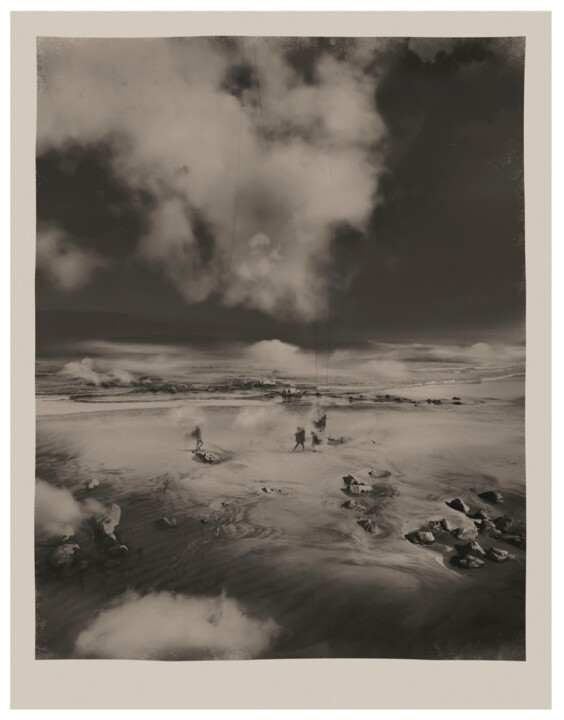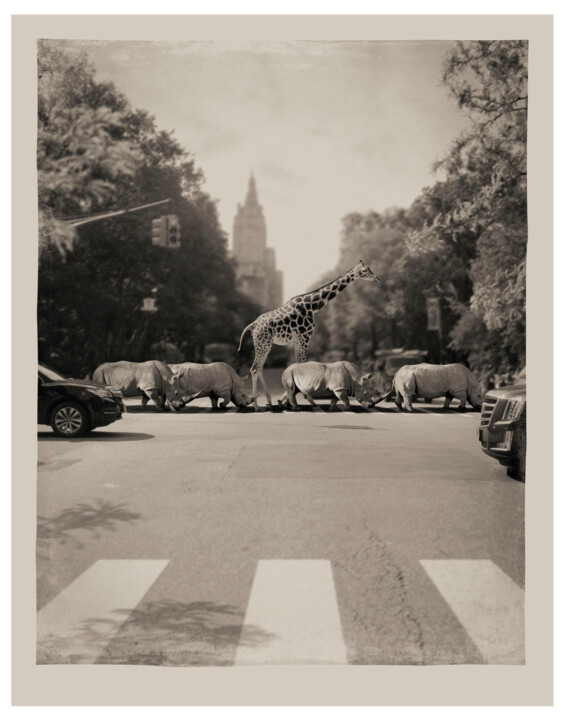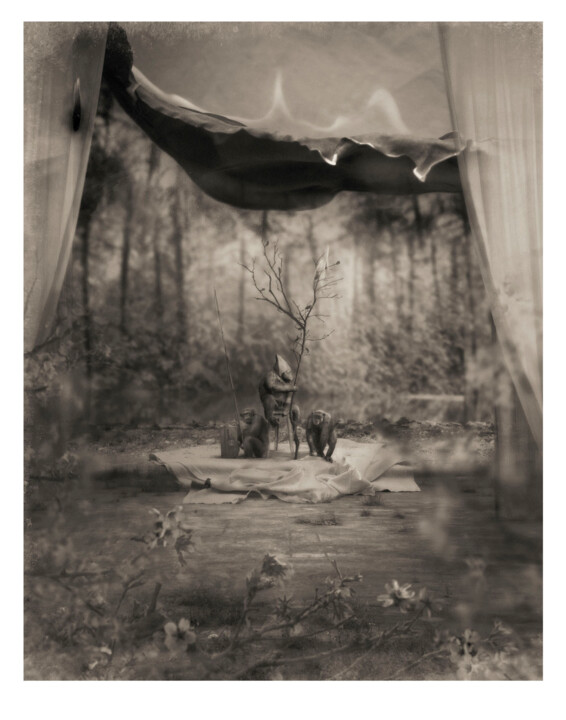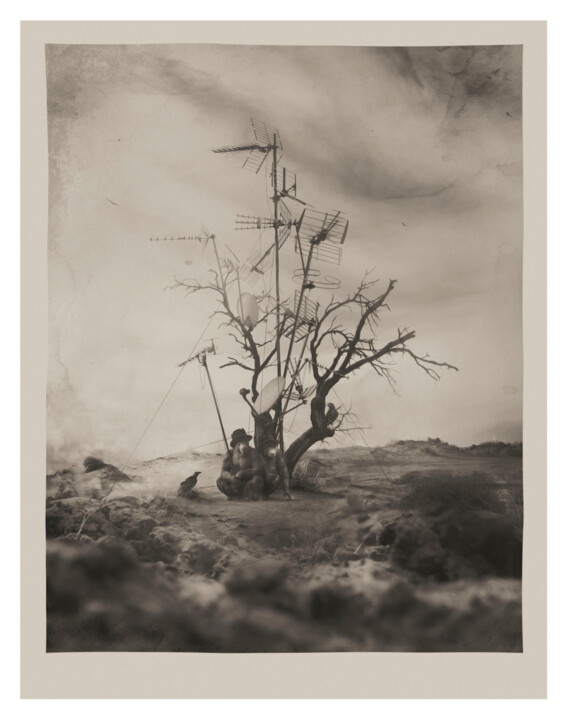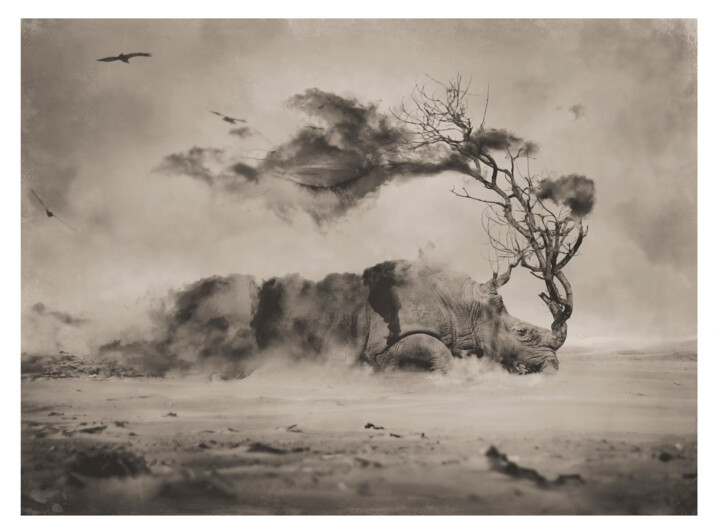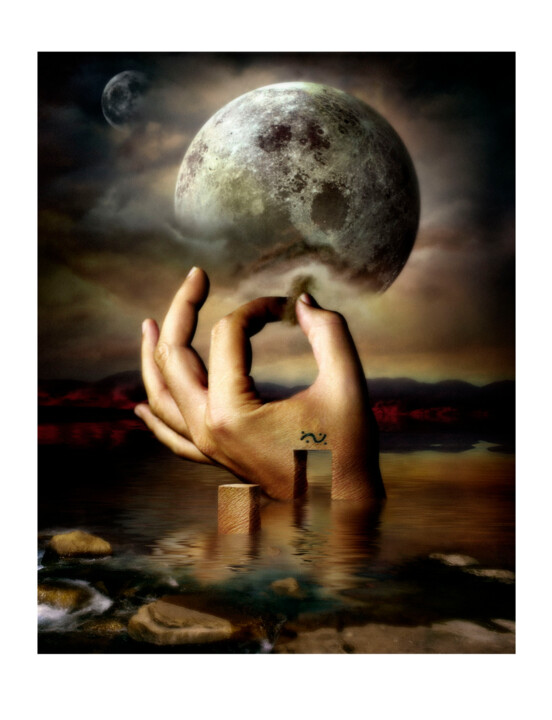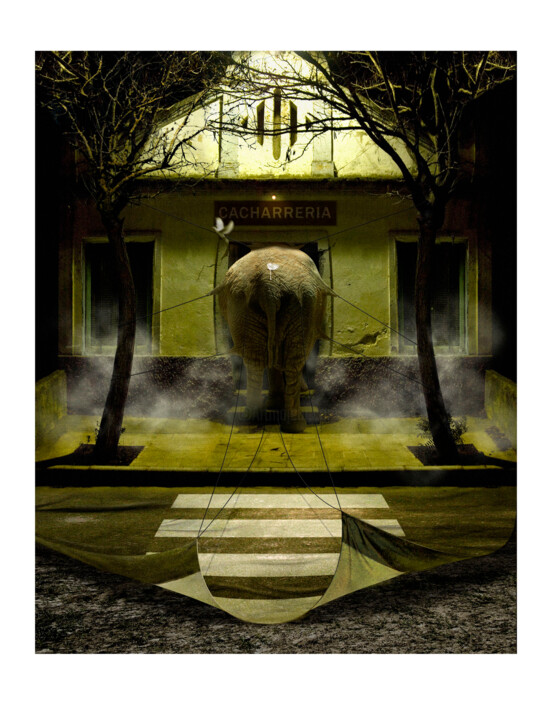What inspired you to create art and become an artist (events, feelings, experiences...)?
Since I was very young I started to stand out with handicrafts. And when I was young my father gave me an airbrush with which I made my first works, they were small and simple illustrations that I gave to my friends and family or illustrated my music cassettes ... On the other hand, my grandfather was a great fan of photography and my father was a photo retoucher, so around me I always lived photography closely. But it was the entry of the digital era and editing programs that seduced me definitively and to dedicate myself to create my own worlds thanks to its infinite possibilities.
What is your artistic background, the techniques and subjects you have experimented with so far?
I started studying and working in a graphic design studio, and I also have some photography courses,
but my vocation is basically self-taught. My main technique is photomontage from images that I take myself in most cases.
What are the 3 aspects that differentiate you from other artists, making your work unique?
Well, I don't know if my work is unique, it would be a bit daring to say that my work is unique. I can only say that my work is made with all the passion and enthusiasm in the world and I try to make it as original as possible but basically it is an invitation to the viewer to imagine other worlds and other realities through my particular way of seeing the world.
Where does your inspiration come from?
Inspiration usually comes from a variety of sources, which could include personal experiences, observation of the world around me, exploration of specific themes and of course the connection to other artists and their work which is quite inevitable. In addition, inspiration can come from my own emotions, feelings and inner thoughts, as well as from my own personal creativity and perspective.
What is your artistic approach, what visions, sensations or feelings do you want to evoke in the viewer?
My artistic approach is basically centered within the current of surrealism. The surrealists sought to free the mind from the constraints of reason and logic, and explore the world of dreams and emotions. Sometimes I combine seemingly unconnected objects and forms to create images that defy conventional logic and understanding. I also often use nature and the world around me as a reference, but I capture them in a dreamlike way creating a world that may seem strange and disconcerting but is at the same time familiar to us. Photographs that are a sample of how the art of photography can transcend the simple recording of reality to become something more.
What is the process of creation of your works: spontaneous or with a long preparatory process (technical, inspiration from art classics or others)?
One process of creation is the preparatory one in which I start from a main idea and make a small pencil sketch with the 4 basic ideas, and then I photograph the images to carry it out. This process is more meditated and studied since it starts from a pre-established base. And then there is another process that is much more spontaneous. From one or several images that I have on file, different possibilities come to my mind and I start to play as if it were a puzzle with all the images, as if it were a kind of automatic writing, until I reach a point where a spark occurs and then I know that the process of creating the work is finished. To make a culinary simile, you could say that sometimes I start from a previous recipe and go to the market to find the ingredients and then cook it, and at other times, I open the fridge and cook with what is inside ..... two different systems, but never, never, you know how a work is going to end and this makes it exciting.
Do you use any particular working technique? If so, can you explain it?
Basically photomontage.
Are there any innovative aspects in your work, can you tell us which ones?
My work is based on the technique of photomontage, now digitally, but a technique as old as photography itself. And at this point in time when new creative techniques emerge every day, especially now with the arrival of artificial intelligence that will be like a tsunami, today I would not consider myself an innovator.
Do you have any format or medium with which you feel more comfortable? If so, why?
I feel comfortable with all formats. They all have their place.
Where do you produce your works? At home, in a shared workshop or in your own workshop? And in this space, how do you organize your creative work?
My studio is far from being an artist's studio as people can imagine it, all messy, with easels and canvases everywhere and full of paint stains as a painter's studio can be. Generally my workspace is quite tidy as my main tool is the computer. Of course I also use the camera and sometimes I have to set up a small studio set to make my creations, but in most cases the photos are taken outdoors.
Does your work take you to travel to meet new collectors, for fairs or exhibitions? If so, what does it bring you?
Yes, yes, and it's a very attractive part of being an artist, meeting other people who are in the same world as you, there's a special connection. You always get something positive out of it, other points of view and very enriching experiences, and it's the perfect excuse to get out of the cave and step into the real world.
How do you envision the evolution of your work and career as an artist in the future?
For better or for worse, I don't tend to think too much about the future, basically because it never ends up being the way you had imagined it. But I'm working to make my work more manual, more organic, so to speak. That it has a more personal and non-transferable component. Now that our world is becoming more and more digital and virtual, I would like to create something that when you have it in front of you and you can touch it, you can see that the artist's hand has intervened directly, that he has left a physical trace.
What is the theme, style or technique of your latest artistic production?
I don't have a favorite theme, so depending on the work I do, that's the theme, and always with surrealist connotations which is where I feel most comfortable.
Can you tell us about your most important exhibition experience?
I remember with great satisfaction the exhibition I did at the Can Framis Museum of the Vila Casas Foundation. You could say that it is the most important exhibition I've done. Another one I remember a lot is the one I did in New York. It was a trip that I took advantage of to visit the city with my wife and our families and it was unforgettable. But I remember very much the first time I exhibited. It was a now defunct gallery in Barcelona that gave me the opportunity to exhibit for the first time. The excitement, the nerves and the illusion of the first time, it was great!
If you could have created a famous work in the history of art, which one would you choose? And why?
It is difficult, but I would have liked to paint "The Garden of Earthly Delights" by Hieronymus Bosch. A magnificent work in which I could spend hours looking at every detail and never get tired of it.
If you could invite a famous artist (dead or alive) to dinner, who would it be? How would you suggest to spend the evening?
Ufff....more difficult yet. But I would go for Leonardo da Vinci to say just one. I would love for him to tell me first hand about his experience of living in such an exciting time as the Italian Renaissance and how he gestated all his projects.



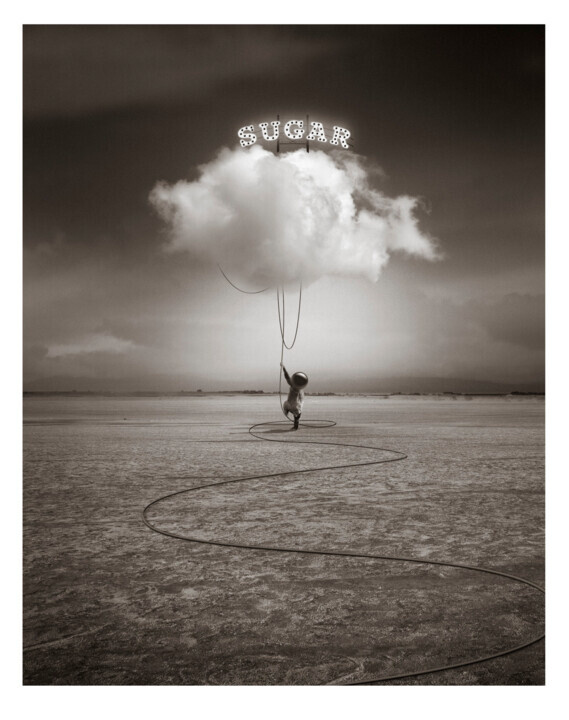

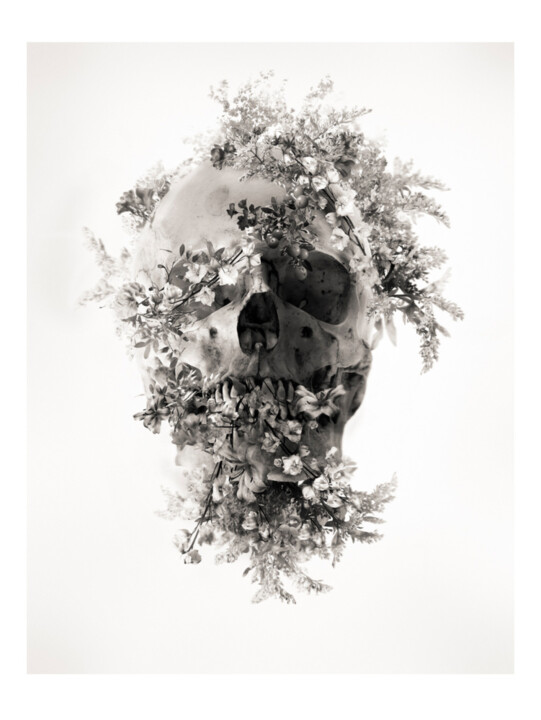

 Olimpia Gaia Martinelli
Olimpia Gaia Martinelli

